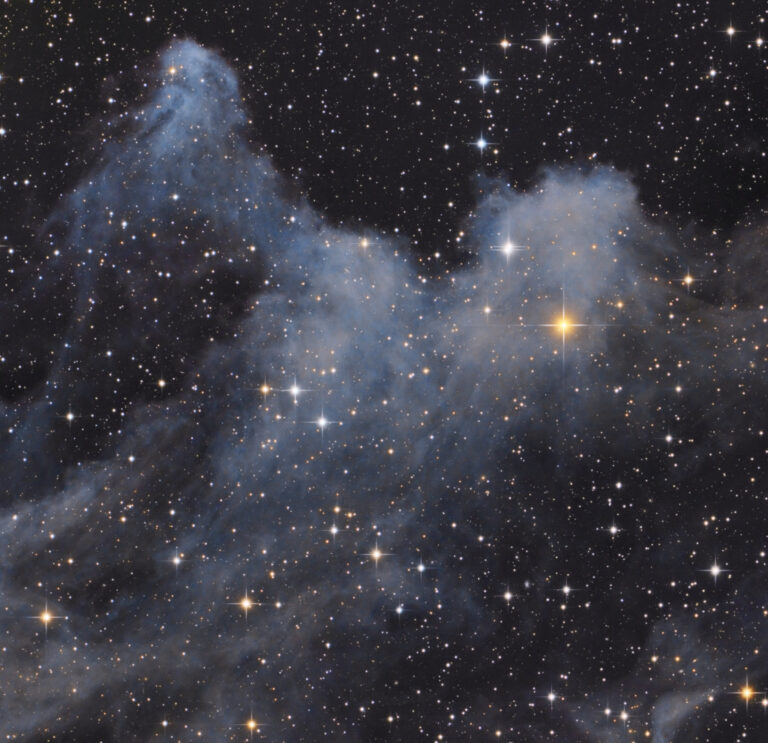心宿增四附近的色彩缤纷恒星与云气
2024年6月11日
Colorful Stars and Clouds near Rho Ophiuchi
Image Credit & Copyright: Craig Stocks
Explanation: Why is the sky near Antares and Rho Ophiuchi so colorful, yet dusty? The colors result from a mixture of objects and processes. Fine dust — illuminated by starlight — produces blue reflection nebulae. Gaseous clouds whose atoms are excited by ultraviolet starlight produce reddish emission nebulae. Backlit dust clouds block starlight and so appear dark. Antares, a red supergiant and one of the brighter stars in the night sky, lights up the yellow-red clouds on the upper right of the featured image. The Rho Ophiuchi star system lies at the center of the blue reflection nebula on the left, while a different reflection nebula, IC 4605, lies just below and right of the image center. These star clouds are even more colorful than humans can see, emitting light across the electromagnetic spectrum.
Open Science: Browse 3,400+ codes in the Astrophysics Source Code Library
Tomorrow’s picture: unexpected sky
心宿增四附近的色彩缤纷恒星与云气
影像提供与版权: Craig Stocks
说明: 为何心宿二与心宿增四附近天空的色彩会如此缤纷呢?这些色彩源自该区域的天体和一些物理过程。首先,微细的尘埃受到前方星光的照射,因而产生了泛蓝的反射星云。紫外星光则激发了气体云内的原子,产生了泛红的发射星云,而背光的尘埃遮住了后方的星光,其黝黑的身影成为暗星云。照亮这幅主题影像中下方黄红星云的心宿二,除了是颗红超巨星之外,也是夜空中的亮星之一。此外,位于影像左侧泛蓝星云中心处的是心宿增四恒星系统,而在影像的中右下方可见到另一个不同的反射星云IC 4605。影像中的这些星云所散发的色彩,远超出了人类肉眼之可见,遍及所有的电磁波段。 (Antare 心宿二;Rho Ophiuchi 心宿增四)
开放科学: 浏览天体物理学源代码库中的3,400多个代码
明日的图片: unexpected sky








一条评论